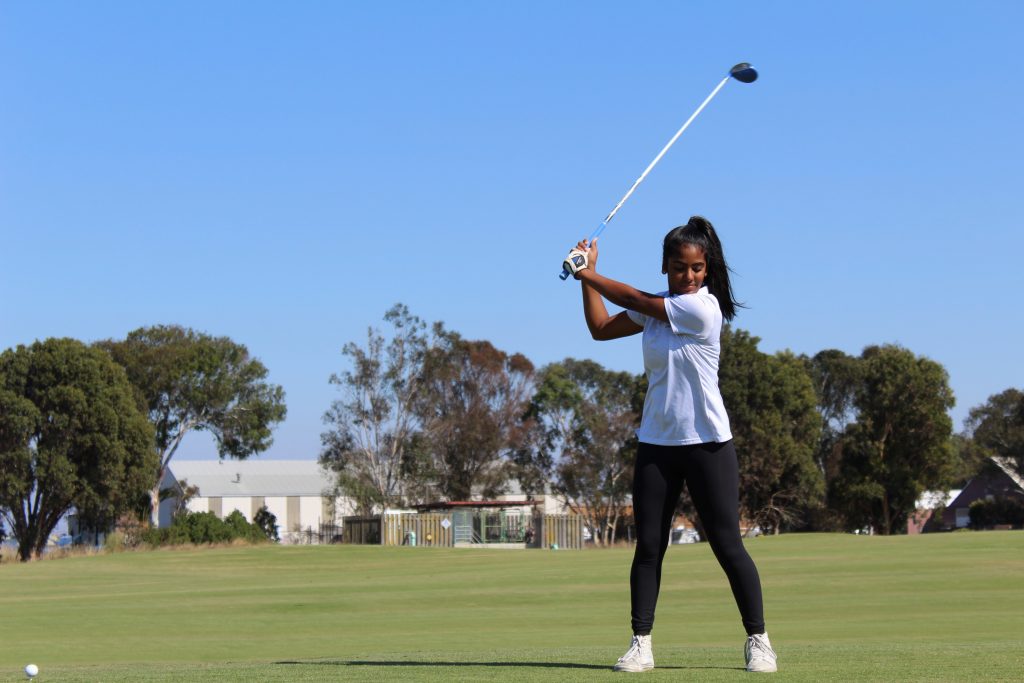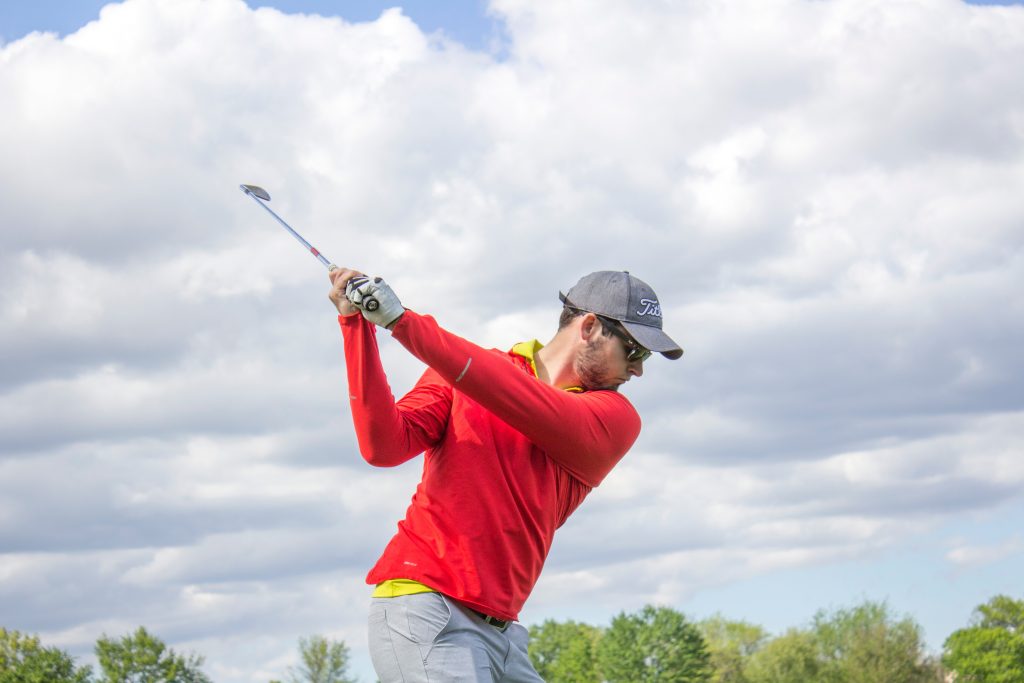
Do you need help improving your golf swing? Every golfer has different abilities and skill sets that can further their game. Hence the handicap system that differentiates one player’s ability from the next. While players have different scores and club preferences, an important aspect is their swing. How does a golfer perfect their swing and what can you take away from their tips and golf secrets to help you with yours?
Let’s take a look at the 5 secrets to a good golf swing before checking out a few golf swing tips from the pros. Then, we’ll take a look at Swing King’s “Hole in One” Golf Contest where you can enter to win up to $100,000 (fantastic!).
This guide explores a few tips you can learn about golf swings:
- Top 5 Secrets to a Good Golf Swing: Hip Sway, Shoulder Tilt, Hips Turn and Sway, Shoulder Tilt at Impact and Shoulder Bend with Follow-Through
- Best Golf Swing Tip Quotes from the Pros: Rory McIlroy, Tiger Woods, Greg Norman, Jack Nicklaus, Fred Couples, Nick Faldo and Justin Thomas
- Swing King’s $100,000 “Hole in One” Golf Contest
Top 5 Secrets to a Good Golf Swing

A few important aspects can help you to improve your golf swing. From your backswing to your downswing, here are a few pointers to keep in mind to improve your game:
Your Shoulders Should Tilt From the Top, Not Be Level
Mistake: Don’t turn your shoulders completely level as if looking behind you.
Correction: Turn the left front shoulder down toward the ground.
For most golfers who want to hit long, a tip that can help them is to get more turn into their swing. It’s not just turning your shoulders all the way but paying attention to how they turn. A mistake some players make is they turn their shoulders as if to look behind them. To swing like the pros, try tilting your shoulders as you turn them. When you turn, your left front shoulder should move down to the ground on a backswing. It might only look like you’re tilting, but practice in front of a mirror for better turns.
Your Hips Should Shift Toward Your Target, But Not Within an Inch or Two
Mistake: With an initial sway, don’t shift your full body weight from the target.
Correction: Shift your hips toward your target. Your tailbone (reference point) should get closer to the target. Your head should not get closer to the target or go over the back foot.
For golfers that need the correct swaying posture, a tip that can help is to shift some pressure – but not all to the back foot. A mistake some players make is when they turn their bodies, they overextend their bodies away from the ball. Want to swing more like the pros? Make your tailbone your reference point. It should get closer to the target as you turn but don’t let your head shift near the target or go over that back foot. The goal is to get several inches closer but not you don’t want to come within one or two inches.
Turn Your Hips Diagonally Toward the Target Line, Not Partially
Mistake: Stalling a hip turn with your downswing and then trying to correct a swing with arms and hands.
Correction: Turn the hips twice as much in the target line’s direction at impact.
For some golfers, a mistake comes in an incorrect swing. They cut across the ball and this leads to slicing. They focus too much on their upper bodies and not the hips and lower body. The pros will turn their hips toward the target line. It’s almost a diagonal hip turn as if they were doing the twist. The arms and hands with the club will then come through, not at the beginning. Use the belt buckle as a reference point. It should face the target line at impact, not the ball. The knees will point at the target line directly thereafter.
Don’t Let Your Arms Dominate Your Swing, But Keep Your Back Shoulder Lower

Mistake: An arms-dominated swing produces relatively level shoulders at impact.
Correction: At impact, lower the back shoulder more than the front shoulder.
Golfers sometimes make a mistake of not tilting their shoulders. Amateurs that try to “kill the ball” tend to have an arms-dominated swing. This problem leads to level shoulders. When the professionals swing, notice that they have a better shoulder tilt. Their back shoulder is always a lot lower than their front shoulder at impact. To help you, keep your belt buckle extended over your front foot at the impact point. Your head should be slightly over the center of your golf stance. You should finish with your back stretched and torso extended, not bent over.
Don’t Stay Bent at Impact, But Extend Your Torso with Your Follow-Through
Mistake: Staying bent through impact and not using your full body.
Correction: Get tall in your chest and torso and this will give you more speed.
A mistake some golfers make is they have a bent posture and stay bent through impact. Doing this doesn’t allow them to use their body to get more speed. When you watch the pros, notice how they become very long and tall in their chest and torsos during their follow-through. This allows them to use their upper body and not just arms. To achieve this, as you finish your swing, imagine standing tall as if you were pushing off the ground to take a leap in the air. The goal is to extend through impact to achieve your finish.
Secret Golf Swing Tips From the Pros
Not sure if your grip pressure is right or are you concerned that you’re “killing the ball” and not getting enough speed? Here are a few tips from the pros that can help.
Rory McIlroy…
“People are always amazed by how far I hit the ball off the tee. I’m not the biggest guy out here, at 5-feet-10 and 160 pounds, but I’ve always been long for my size. I have a lot of natural speed. In the gym I work mostly on core stability and flexibility, which has helped make me longer. Plus, I like to swing with no fear. I’m a grip-it-and-rip-it guy. I’ve always played that way, and I’ve quickly found that nearly everyone on tour does, too. Over the ball, I think about nothing other than the target. I don’t focus on technique. But, under pressure, I do use one simple swing thought: I pick a spot a foot in front of the ball and hit over it — hard. That takes my mind off the outcome of the shot and keeps me in the process.”
Nick Faldo…
“Never swing with more than 80 percent effort.”
If you’re worried about “killing the ball” or being too arm-dominant, here’s a tip. At the driving range practice hitting with your 7- or 9-irons as hard as you can. Then, scale back your swing. What you might find over time and with a little practice is that you can hit further with less over-exertion.
Jack Nicklaus…
“Be conscious of your grip pressure.”

Some golfers tend to tense up during play but this can have a bad effect on your golf swing. It can also affect your rhythm which comes from your grip pressure. and clubhead speed. To help you, don’t tense your fingers or you might also tense your shoulders and arms. That can cause you to lose power. On the driving range, experiment with different grip pressures. Then try it out with your putting and short game. You can also use Sam Sneed’s tip: “Grip the club as if you were holding a baby bird. Not so tight that you squeeze the life out of it, but supple enough that bird does not fly away.”
Tiger Woods…
“A lot of time when I’m getting tight [in my back], I struggle to get deep enough into that back hip. I stand up in my downswing, and that puts a lot of stress on my back. But if I don’t feel like I can turn I can’t get back into my hip, so it’s all about how I train, how I feel, getting everything switched on…when I do it.”
Tiger recommends a few tips on dealing with a stiff back. For starters, he turns into his right hip with his backswing. He starts by making a big turn and then loads more. When he does this, it takes the pressure off his back muscles for the balance of his swing. Next, he turns as much as he can into his left hip. This helps to keep the club in front of him and it helps with his fades. If he doesn’t load in this manner he will spring up the wrong way and the golf club can get behind him which puts too much pressure on his back. The trick with this move is to ensure you’re not then adding extra pressure to your lower back.
Ernie Els…
“I find that grip pressure and tension hurt my swing more than any other technical problem…If you squeeze the grip too tightly, you engage all the muscles up and down your forearms and into your shoulders. Tight muscles move slower than loose ones — even if you feel very strong and aggressive when you’re holding the club that way…Make a conscious effort to loosen your hands and let your arms feel soft when you’re at address.”
Justin Thomas…
“Everyone’s different in terms of warm up in terms of how long they take and what they do. I would say I’m more on the short side of a warmup. I probably take anywhere… It depends on the facilities. I’ll probably take anywhere from 50-minutes in a place like Augusta to an hour and twenty minutes working on speed, chipping and putting.”
Justin uses a no backswing approach to his warmups. He does these drills and can consistently go straight and far with a modest backswing. What he does is gradually increase the length of his backswing. If he notices that he’s losing any power or control, he’ll revert back to the short backswings. This helps him find the best downswing position with his no backswing drills.
Fred Couples…
“When I reach impact, my right hand feels like it’s almost off the club, which gives me a more powerful hit through the ball than if I was “choking” the grip. I wouldn’t necessarily teach anyone to do that, but it’s the right kind of feel.”
Swing King’s $100,000 “Hole in One” Golf Contest

Want a chance to win up to $100,000? Heard about the HIO Contest or the Swing King Contest? If you think you’ve got what it takes to be the next Swing King, here’s your chance. The “Hole in One” contest is an ongoing contest powered by the “Swing King” system. The contest is ongoing. See the Official Terms and Conditions here.
Enter Now to Win Up to $100,000
Your entry into the contest makes you eligible for the following prizes:
- $5 – to win $10,000
- $10 – to win $20,000
- $20 – to win $50,000
- $40 – to win $100,000
There have been 90 winners already. See their videos here.
How to Sign Up for the Swing King Contest
The contest is offered at Chimera Golf Course on hole 17 and the rules are simple. Once you book a tee time through the Chimera Golf Course website, you will be redirected to a link for Swing Kings where you can enter the contest.
Good luck!

About Chimera Golf Course
Chimera Golf Course is located in Henderson, Nevada. Designed by Ted Robinson, Jr. in 2003, it sits on 6,906 yards. With forgiving fairways in a playable desert landscape, it offers challenges from any tee. Players can enjoy other activities that include foot golf, golfboards and a bite to eat at Slice 19. With unparalleled views of the Las Vegas Strip, book your next tee time at Chimera Golf Club today!

